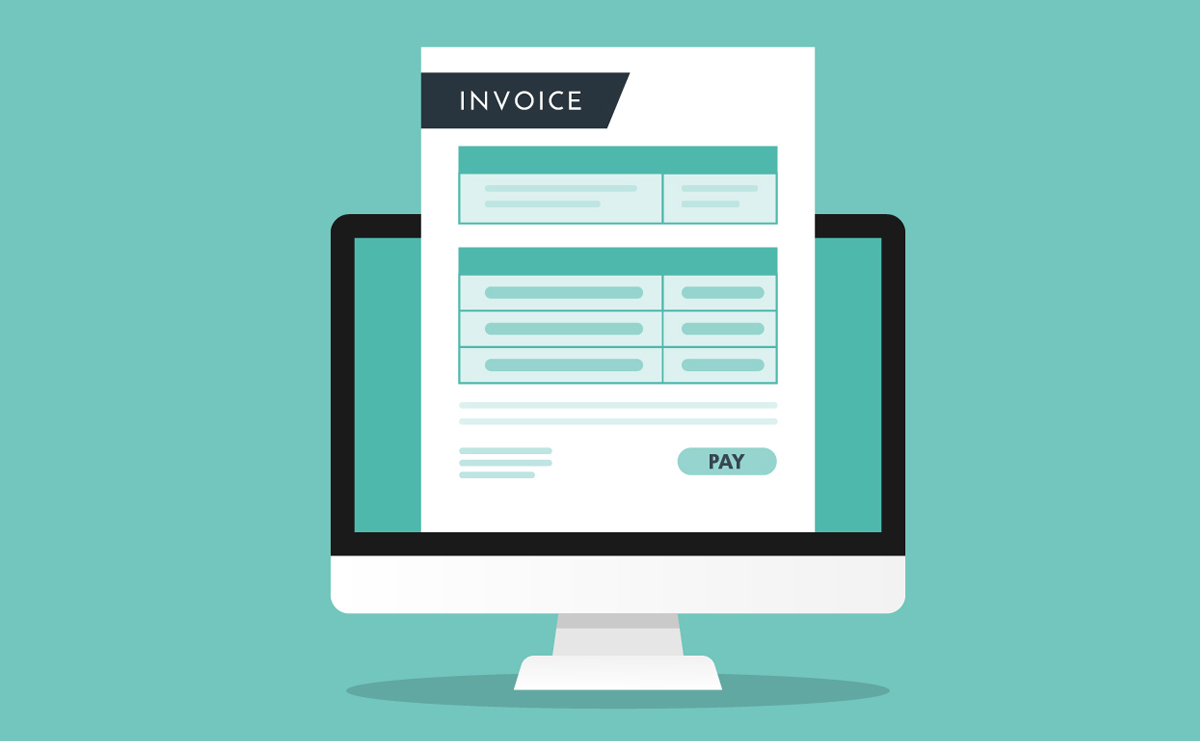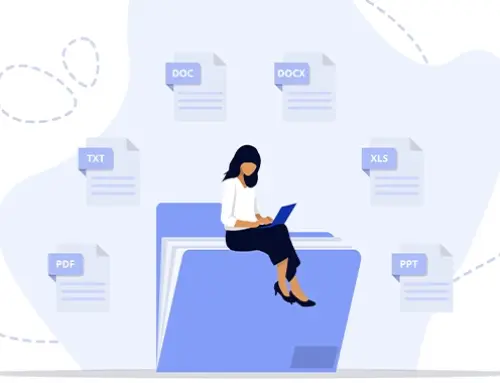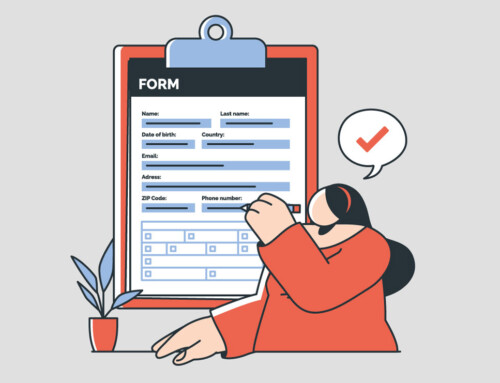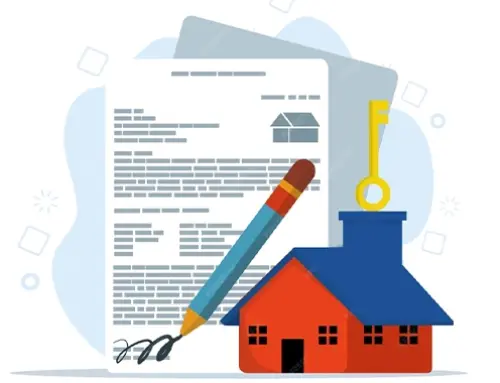Contents
Powerful Law Firm Invoice Templates and Tips for Faster Payments
Legal invoices are not merely bills – they are crucial communications with far-reaching effects on a law firm’s cash flow, client trust, and compliance. For mid- to small-firm law firms, smooth legal bills process equates to quicker payment, less combat, and improved client trust. Yet most firms are victimized by slow payments and mystifying billing; nearly 60% of law practices experience trouble collecting bills in a timely manner. A good legal invoice format and billing system provides predictable cash flow and prevents revenue leakage. Firms with delayed or poor billing typically suffer lockup – revenues locked up in unbilled or unpaid work for months.
Client Trust and Transparency
Beyond dollars and cents, a well-crafted legal invoice reinforces professionalism and transparency. Clients should never be left confused about what they are being charged for. If an invoice is just a vague line item with a large total, it invites questions and distrust. In contrast, a detailed, itemized invoice shows clients exactly what work was done and the value they received. This builds confidence that your fees are justified. Clear legal invoices with descriptive entries help prevent disputes and reduce pushbacks on bills. Thorough, regular billing also fosters trust – clients who understand their bills are less likely to dispute them, and more likely to pay without delay.
Effective legal invoices also play a role in ethical compliance. Attorneys have a duty to charge reasonable fees and keep clients informed about financial matters. By billing consistently and including necessary details (like time entries, rates, and work descriptions), you adhere to professional guidelines on communication. For firms handling client trust deposits or retainers, law firm invoices that show any trust fund usage and remaining balance are essential for transparency. Regular billing with trust accounting details assures clients that their retainer is being applied correctly – and it keeps everyone on the same page regarding how much remains in trust.
Why Effective Legal Invoices Matter for Law Firms
Timely Cash Flow and Revenue
An efficient billing process directly impacts a firm’s financial health. Many firms that struggle to collect fees on time find that billing practices are a root cause. For example, if you wait until a case is over or only bill sporadically, cash flow suffers, and revenue may slip through the cracks. Shortening the billing cycle ensures work turns into cash faster. By contrast, delays in billing mean more work-in-progress lockup – as noted, law firms have an average total lockup of over 90 days of work at any time. The longer you wait for the invoice, the longer you wait to get paid (if you get paid at all). Almost one-third of legal professionals admit their firm takes too long to send out bills, and less than half say they bill clients in a timely fashion. Prompt legal invoice format improves realization (the proportion of work billed) and collection (the proportion paid). Firms that adopt disciplined, timely billing practices invoice a higher percentage of their work and collect a higher percentage of their bills – boosting overall revenue. In short, effective law firm invoices keep the cash flow pipeline steady and ensure your firm isn’t doing work “for free” due to billing delays or oversights.
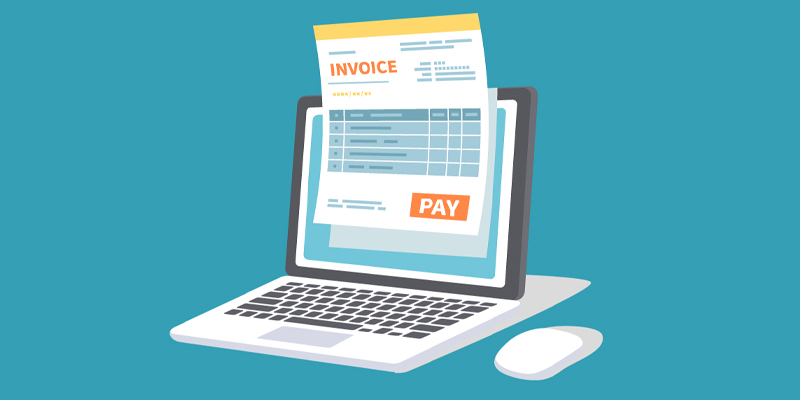
Client Relationship and Perception
Your invoicing practices also influence client satisfaction. Transparent, professional legal invoices build trust, whereas confusing or delayed law firm invoices can erode it. Clients appreciate regular communication about fees – it shows that your firm is organized and respectful of the client’s budget. Consistent monthly invoicing, for example, keeps clients informed about ongoing costs and demonstrates professionalism. It also avoids “sticker shock” from infrequent huge bills. Conversely, failing to invoice for a long period and then sending a massive bill can damage the client relationship. Clients might question the charges or feel ambushed, leading to disputes. By keeping the legal invoice format predictable in time and clear in detail, you reinforce a positive image of your firm. Clients are more likely to pay promptly and continue the engagement when they feel the billing process is fair and transparent. Additionally, clear legal invoices provide a documented history of work – an important record if any misunderstandings arise. In summary, effective legal invoices aren’t just financial tools; they’re part of your firm’s client service. They help manage client expectations, reduce conflicts, and uphold your firm’s reputation for integrity.
Key Components of a Law Firm Invoice Format
To create an effective legal invoice, it’s important to include all the key information in a clear, organized format. A proper legal invoice format for a law firm will typically contain the following components:
Firm and Client Information
At the top of the invoice, include your law firm’s name (and logo), address, and contact information. Also, list the client’s name and billing address (and optionally a matter reference or file number). Identifying both parties and the case ensures the invoice is directed to the right person and matter.
Legal Invoice Format Details and Dates
Give each invoice a unique number and an issue date. Also specify the billing period covered (for example, “Billing Period: April 1–30, 2025”) so the client knows the timeframe of services. These details make it easy to reference the invoice and understand which work is included.
Itemized Services and Expenses
List each billable service as a separate line item, including the date, a brief description of the work, the time spent, the hourly rate, and the line total. For example, instead of a vague entry like “Legal services – 10 hours,” write something like “10/12/2025 – Draft motion for summary judgment – 3.0 hours @ $200/hr = $600.” Breaking out services this way shows the client exactly what they are paying for and helps prevent disputes. Also, consider listing any significant work you did at no charge as a $0 line item – it demonstrates value and thorough record-keeping. If you advanced any expenses for the client (such as court fees or travel costs), list those charges separately with a description and amount.
Totals, Taxes, and Adjustments
After listing all items, provide a summary of charges. Include subtotals for fees, subtotals for any expenses, any applicable taxes, and then the total amount due. If the client had a previous balance or any payments/credits on their account, reflect those as well so the invoice shows the net amount due. Additionally, if you are billing against a retainer or trust deposit, indicate how much of the retainer was used and the remaining balance. This clear summary of calculations helps the client see exactly how you arrive at the final total.
Payment Terms and Methods
Clearly state your payment terms on the invoice – for example, “Payment due in 30 days” – and note any late fee or interest for overdue payments (e.g., “1.5% interest per month on past due amounts”). Next, list the accepted payment methods and instructions. Provide the mailing address for checks, any necessary bank details for transfers, and (ideally) an online payment option or credit card link for convenience. Many clients prefer to pay by credit card or electronic transfer now (nearly half of clients favor card payments, while only about 20% still prefer checks). By offering multiple ways to pay, you make it easy for the client to settle the bill promptly. For instance, you might even include a QR code on the invoice that clients can scan to access a payment page instantly. Lastly, include contact information for billing inquiries and perhaps a courteous thank-you note to conclude the invoice.
Best Practices for Creating Effective Legal Invoices
Even with a solid format in place, law firms should follow best practices to make their billing process efficient and client-friendly. Below are some of the top invoicing tips and habits that can improve your billing effectiveness and get your firm paid faster:
Send Legal Invoices Promptly and Regularly
Don’t wait too long after performing the work to send out the invoice. Establish a consistent billing schedule – for most firms, this means invoicing monthly (or even more frequently for fast-moving matters). Regular, timely billing keeps clients informed and helps your cash flow. It also sends the message that your firm expects prompt payment. In contrast, sporadic or very delayed billing can frustrate clients and suggest that getting paid isn’t a priority for your firm. For smaller one-off matters, you might bill at the conclusion of the case – but try not to wait long after finishing the work to send the invoice.
Use Clear, Detailed Descriptions
Clarity in billing entries is critical. Each line description on your invoice should convey what was done and why it was necessary, in terms a client can easily understand. Avoid cryptic abbreviations or one-word descriptors like “Research” or “Phone call.” Instead, provide context in the description (e.g., who and what the task involved). As a result, the client can see the value in the work. Our simple examples above illustrate how specific descriptions (“draft motion for summary judgment”) are better than vague ones (“draft document”). This approach greatly improves transparency, and it shows clients exactly how you spend your time. It also helps prevent misunderstandings or disputes about the work performed.
Maintain Consistency and Accuracy
Consistence in your law firm invoices projects professionalism and prevents confusion. Use a uniform format and style for all legal invoices: the same date format, same fonts and layout, and consistent terminology. Also, be consistent in time increments – if you bill in 0.1-hour units (6 minutes), use that for every entry. Inconsistent rounding or mixing units (like some entries in minutes, others in decimals) can confuse clients and undermine confidence. Always double-check calculations on each invoice. Mathematical errors (like mis-summed totals or tax miscalculations) erode trust quickly. If you use software, take advantage of automatic sum calculations to avoid arithmetic mistakes. A consistent, error-free invoice format demonstrates attention to detail and reinforces that your firm’s billing is reliable.
Offer Convenient Payment Options
Making it easy for clients to pay is one of the surest ways to get paid faster. Whenever possible, include an electronic payment option on your law firm invoices – for instance, a secure “Pay Now” link for credit card or ACH payments. Firms that offer online payments typically get their bills paid much sooner (often in about 7 days on median, versus 15 days for firms that rely only on mailed checks). (For instance, one study found firms that collected most payments online got half of their legal invoices paid within 3 days of issuance, which is five times faster than firms not using electronic payments.) By giving clients a simple digital way to pay, you remove friction (no checkbook or stamps required) and greatly improve the odds of prompt payment.
Follow Up with Reminders
Even with clear legal invoice format and convenient options, some clients need reminders. Busy clients might simply overlook an invoice in the shuffle. That’s where a structured reminder schedule comes in. Don’t hesitate to send reminder notices — they serve as professional nudges that underscore the importance of timely payment. A common practice is to send a friendly payment reminder a week before the invoice due date, another on the due date, and a late notice shortly after the due date if needed. Consistent reminders (via email or mail) remind the client that the bill is due. The table below shows an example schedule:
| Stage | Timing | Purpose |
| Invoice Issued | Day 0 (e.g. first of month) | Start the payment clock; client receives the bill. |
| Friendly Reminder | 7 days before due date | Gently remind clients of the upcoming due date. |
| Due Date Notice | On due date | Notify client that payment is due today. |
| First Late Notice | 7 days after due date | Inform the client that the invoice is now overdue. |
| Follow-up Call/Email | ~14 days after due date | Personally reach out to discuss payment. |
| Final Notice | 30+ days after due date | Send a firm notice (or consider other collection steps). |
Table 1: The stages scheduled as well as their purpose
Regular, polite reminders greatly increase the likelihood of timely payment and help you avoid costly collections.
Streamlining Your Invoicing Process with Templates and Technology
Use Invoice Templates for Efficiency
Creating a standard invoice template for your firm can save enormous amounts of time and reduce errors. A template contains your firm’s branding and all the necessary fields (client info, date, line items, totals, etc.) pre-formatted, so you don’t have to start from scratch each time. (Many state bar associations and practice management software providers offer free invoice templates that you can customize.) Then, each billing cycle, you simply plug in the current details. Adopting custom templates through your word processor or billing software ensures every invoice is uniform and complete. Indeed, firms that implemented same-day invoicing with templates saved around 10% of their billable time that used to be spent on billing tasks.
Leverage Legal Billing Software
Modern legal billing software can automate and streamline much of the invoicing process. A cloud-based practice management system (such as RunSensible Pro) can automatically track your billable time, generate polished legal invoices with a click, send law firm invoices to clients via email or client portals, and even schedule follow-up reminders. These tools can also produce legal invoice format in LEDES formats with standard UTBMS (task) codes if your firm needs to comply with electronic billing requirements for corporate clients. This automation not only saves you administrative work but also accelerates cash flow. In fact, law firms using comprehensive billing software report getting paid significantly faster than those billing manually (one analysis showed firms using software shortened their payment cycle by over 40 days on average). By removing bottlenecks like manual calculations and mailing delays, legal billing software helps ensure no billable time is lost and that you get paid promptly.
Common Legal Invoicing Mistakes to Avoid
Even well-intentioned firms can slip up in their billing process. Here are some frequent invoicing mistakes law firms should watch out for and correct.
Using Confusing Jargon or Abbreviations
It’s a mistake to fill out invoices with legal acronyms or shorthand that clients might not understand. For example, writing “Conf. w/ opp. counsel re: MSJ” is likely to confuse a client. Always use clear, plain language in your billing descriptions – spell things out so that anyone reading the invoice can follow what work was done. This transparency prevents misunderstandings and disputes.
Lumping Tasks Together (Block Billing)
“Block billing” – combining multiple tasks into one time entry – should be avoided. If you list “Research, calls, drafting – 5 hours” as a single line item, the client cannot tell how much time was spent on each task. It’s more transparent to break out each task with its own description and time. Avoiding block billing gives clients a detailed view of your work and helps to justify your fees.
Inconsistency in Time Entries
Be consistent in how you record time on invoices. If you bill in increments of 0.1 hours (6 minutes), stick to that format for all entries. Inconsistent rounding (e.g., sometimes rounding 5 minutes up to 0.1, other times not) can look sloppy or, worse, raise concerns about overbilling. Choose a standard increment (such as six-minute increments) and apply it uniformly across the invoice.
Not Showing Retainer or Trust Usage
If you are working as a client retainer, failing to show retainer usage on the invoice is a mistake. Clients should see on the bill how much of their retainer was applied to the current charges and what balance remains. Omitting this information can lead to confusion and erode trust. Always include a brief retainer accounting section on invoices when applicable, so the client knows where their money stands.
Delayed Invoicing
Procrastinating on sending out invoices is a common pitfall. If you wait months to bill a client, you are likely to encounter more pushbacks and slower payments. Late invoicing can also cause you to forget billable work. Aim to be billed promptly (e.g., each month) so the work is fresh in everyone’s mind. Timely billing demonstrates professionalism and ensures you don’t leave money on the table due to forgotten charges or client frustration.
Conclusion: Billing for Success in Your Law Firm
Effective legal invoicing is both an art and a science. It requires attention to detail, consistency, and a client-centric approach. By implementing the tips discussed above and avoiding common pitfalls, your law firm can transform its billing process from a hassle into a strategic advantage. Clear and timely legal invoices lead to quicker payments, improving cash flow and reducing the stress of chasing down receivables. They also enhance your firm’s reputation for transparency and professionalism, which clients will appreciate. Remember that the effort you put into crafting well-structured invoices and streamlining your billing workflow pays off directly in your bottom line. Firms that modernize their invoicing (using templates, online payments, and automation) often see measurable improvements, from higher realization rates to reduced collection periods. In a legal market where efficiency and client satisfaction are paramount, billing isn’t just an administrative task – it’s a reflection of your firm’s overall excellence. By billing smarter – combining clarity, consistency, and the right technology – your firm can boost collection rates and achieve greater financial success.
You’ll spend less time on billing disputes or corrections, and more time on billable work and building client relationships. Ultimately, a well-oiled invoicing system means you get rewarded faster for the hard work you do, fueling the growth and stability of your practice.
Supercharge Your Billing with RunSensible
Take your firm’s invoicing to the next level with RunSensible, an all-in-one legal practice management solution built to streamline billing. RunSensible enables you to generate professional invoices with a single click – pulling in your hours and expenses directly from integrated time tracking and case records. You can customize invoice templates with your firm’s branding and let the software handle calculations, tax, and trust account deductions automatically. With built-in LEDES billing support and multiple online payment options (credit/debit card, bank transfer, and more), RunSensible makes it easy for clients to pay you promptly. It also sends automated reminders for overdue bills and provides real-time notifications when invoices are viewed or paid. By centralizing your time tracking, invoicing, and payments, RunSensible helps your firm get paid faster while eliminating billing hassles – so you can focus on practicing law, not pushing paperwork.
FAQs
How often should our law firm send out legal invoices?
Most law firms bill clients on a regular monthly basis. Sending invoices at least once a month keeps clients informed and helps your cash flow. In some cases – like very large matters or quick-turnaround projects – you might invoice more frequently (for example, bi-weekly) to avoid piling up too many charges. The key is consistency. If clients know how to expect a bill on the first of each month, they can budget and pay on time. Regular billing also prevents the firm from forgetting billable work. For smaller one-off matters, you might bill at the conclusion of the case – but try not to wait long after finishing the work to send the invoice.
What information should be included in a legal invoice?
A proper legal invoice should contain all the basics: your firm’s name and contact information, the client’s name (and matter reference), the invoice number and date, and an itemized breakdown of services. Each billed task should be listed with the date, description, hours, rate, and amount. Also include any expenses (with descriptions and amounts) separately. At the end, show the subtotals, applicable taxes, and the total amount due. Don’t forget to state the payment due date and acceptable payment methods (e.g., check, credit card, online).
How can we encourage clients to pay their invoices on time?
Start by making your invoices clear and error-free – clients are more likely to pay promptly if they understand the charges and don’t spot mistakes. Set clear payment terms (such as “Due in 30 days”) and communicate them upfront in your engagement letter. Offering convenient payment options is critical: for instance, include an online payment link or credit card option so clients can pay immediately. Many firms find that they get paid faster by accepting electronic payments rather than waiting for checks in the mail.
Should we use electronic invoices and online payments?
Yes, in nearly all cases. Electronic invoices (sent by email or via a client portal) reach clients faster than paper mail, and they are easier for the client to forward or save. More importantly, enabling online payments (credit card, ACH transfer, etc.) can significantly speed up how fast you get paid. Studies have shown that law firms using online payment solutions get paid in a fraction of the time compared to firms that rely only on mailed checks. (For instance, firms that collect 75% or more of payments electronically receive about half of their bills within 3 days of issuing them – five times faster than firms not using electronic payments.
What should we do if a client disputes an invoice?
First, approach the situation calmly and professionally. Communicate with the client to find out exactly what they object to – is it a specific charge, the amount of time billed, or something else? Having a detailed backup (time logs, descriptions of work) will help you explain the charges. If there is an error on the invoice, acknowledge and correct it immediately. Otherwise, walk the client through to the bill, providing additional clarification or justification for any items in question. Often, disputes arise from misunderstandings, and a clear explanation can resolve the issue.
Sources
- https://natlawreview.com/article/how-to-send-effective-invoice-reminders-your-law-firm
- https://www.americanbar.org/groups/journal/articles/2021/how-law-firms-should-approach-collections-for-financial-success/
- https://www.leanlaw.co/blog/legal-invoice-template-word/
- https://legal.thomsonreuters.com/en/insights/articles/what-is-ledes-format
Disclaimer: The content provided on this blog is for informational purposes only and does not constitute legal, financial, or professional advice.
